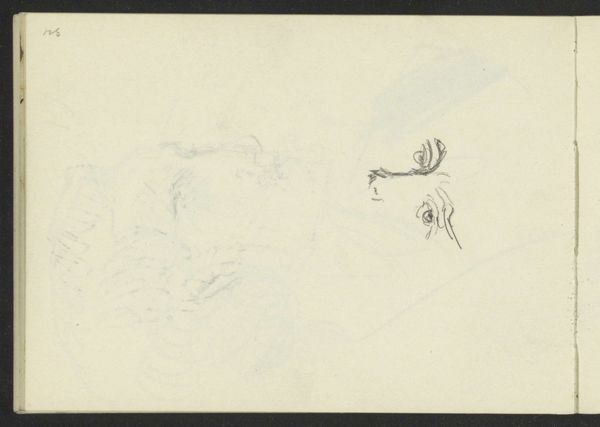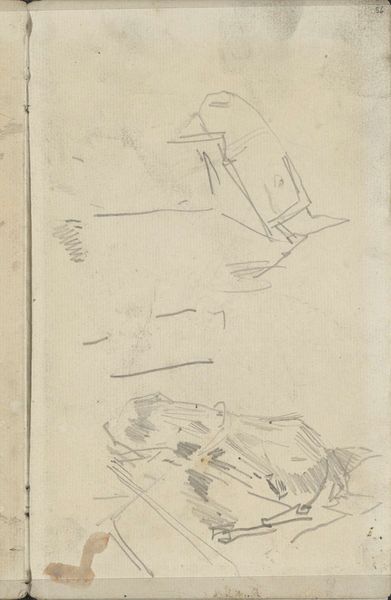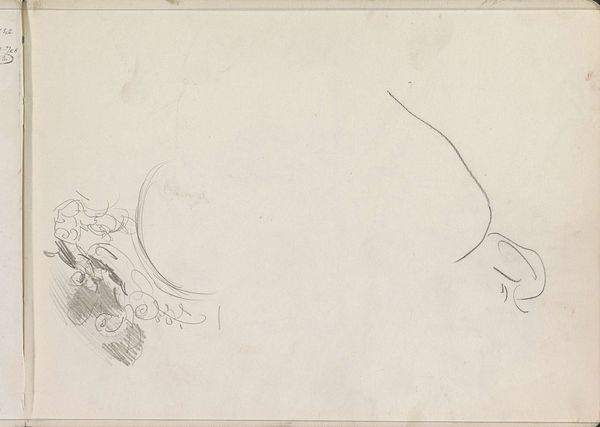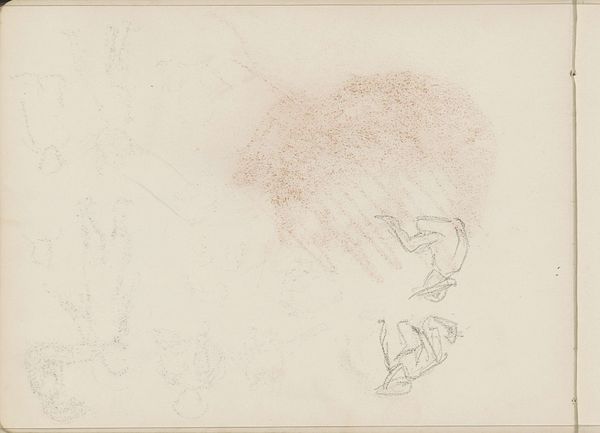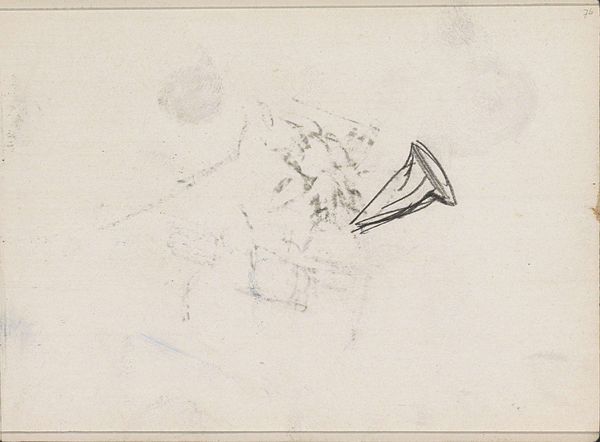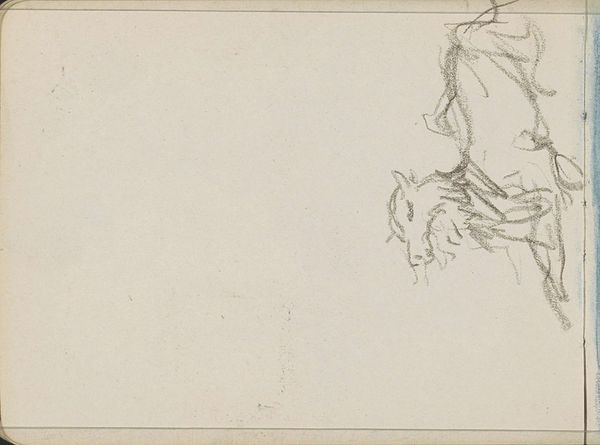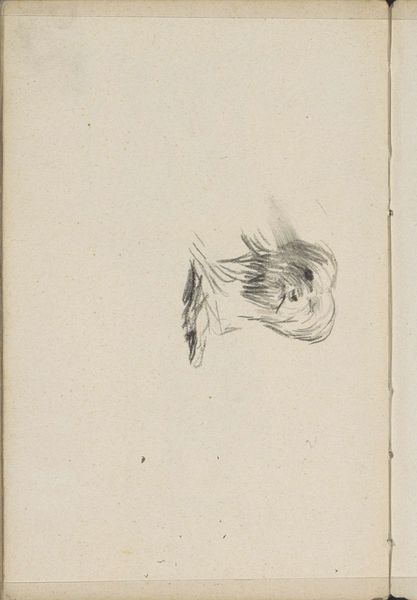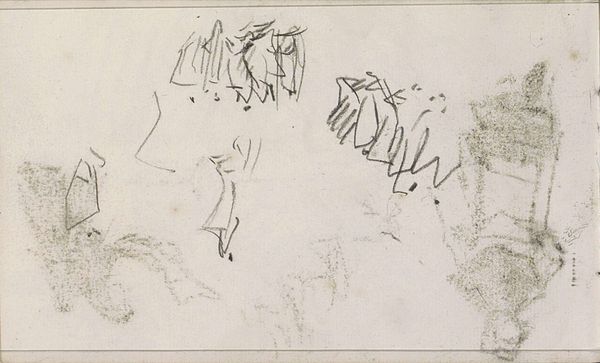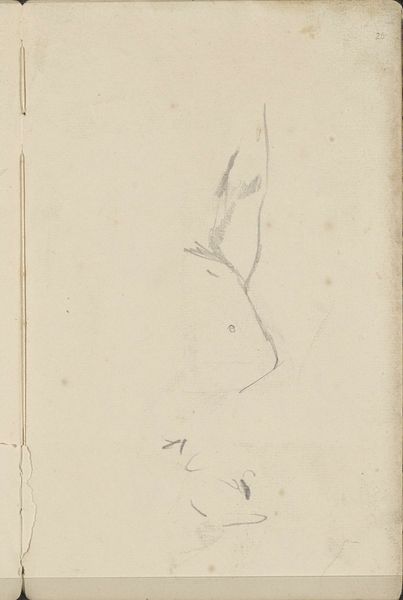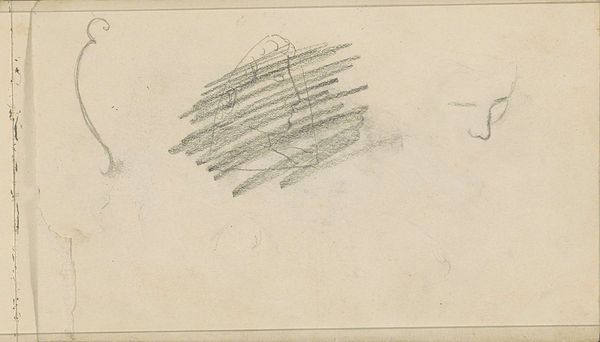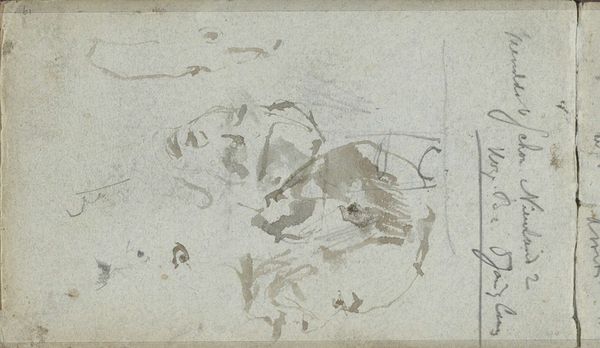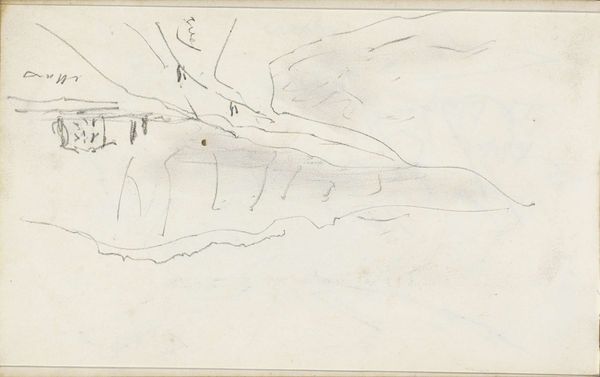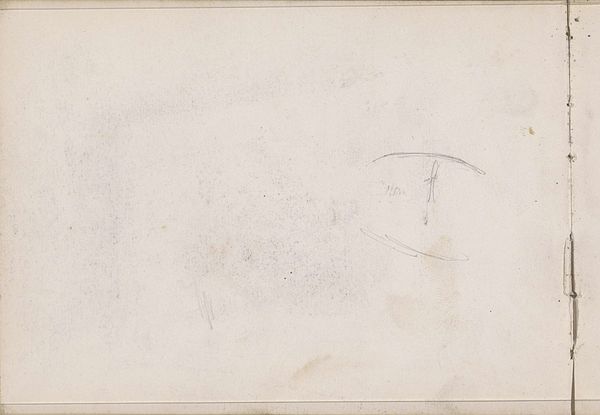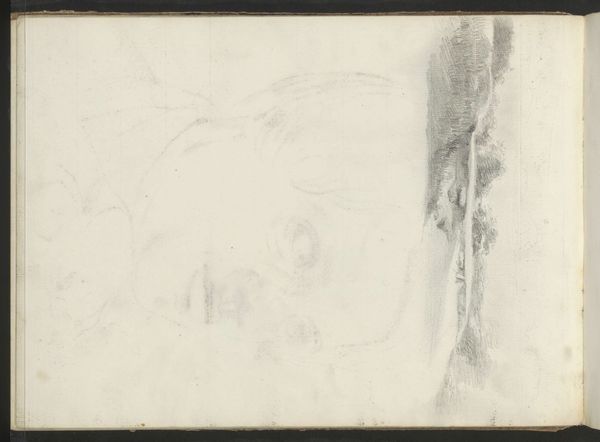
drawing, pencil
#
drawing
#
amateur sketch
#
toned paper
#
light pencil work
#
pencil sketch
#
incomplete sketchy
#
personal sketchbook
#
idea generation sketch
#
geometric
#
pen-ink sketch
#
pencil
#
sketchbook drawing
#
sketchbook art
Copyright: Rijks Museum: Open Domain
Editor: Here we have Jac van Looij’s "Gevelsteen met jaartal in cartouche," a pencil drawing from around 1877-1880. It's a fairly light sketch, but the architectural detail has some weight. What stands out to you? Curator: What strikes me is the way this sketch highlights the social life of materials. Van Looij is engaging with architectural elements, cartouches specifically, which were industrially produced. It begs the question: was he interested in the means by which these building components were fabricated, consumed, and ultimately, integrated into the urban fabric? Editor: That’s a neat perspective. I was mainly focusing on the sort of classical look of the design itself. You think he was considering it from a production standpoint? Curator: Absolutely. Think about the context: late 19th century, increasing industrialization. An artist like Van Looij, steeped in academic tradition, would have been encountering mass-produced ornamentation constantly. His sketch could be an implicit commentary on this shift in artistic labor. Editor: So, it's less about the aesthetic of the cartouche, and more about its place within a rapidly changing system of production and consumption. Curator: Precisely! He may be questioning the hierarchy between “fine art” and these architectural details, acknowledging the labor and materiality involved. This challenges the art world’s perceived superiority over industrial craft. How does seeing it this way change your perception of the piece? Editor: It makes me wonder what he was planning to *do* with the sketch. Was he thinking about incorporating industrial methods into his own work, or critiquing their effect on artistic integrity? Thanks for showing me how to read the social context of materials, beyond just what's on the surface! Curator: Indeed, by interrogating materials and their production, we unveil a much richer social narrative within art.
Comments
No comments
Be the first to comment and join the conversation on the ultimate creative platform.
